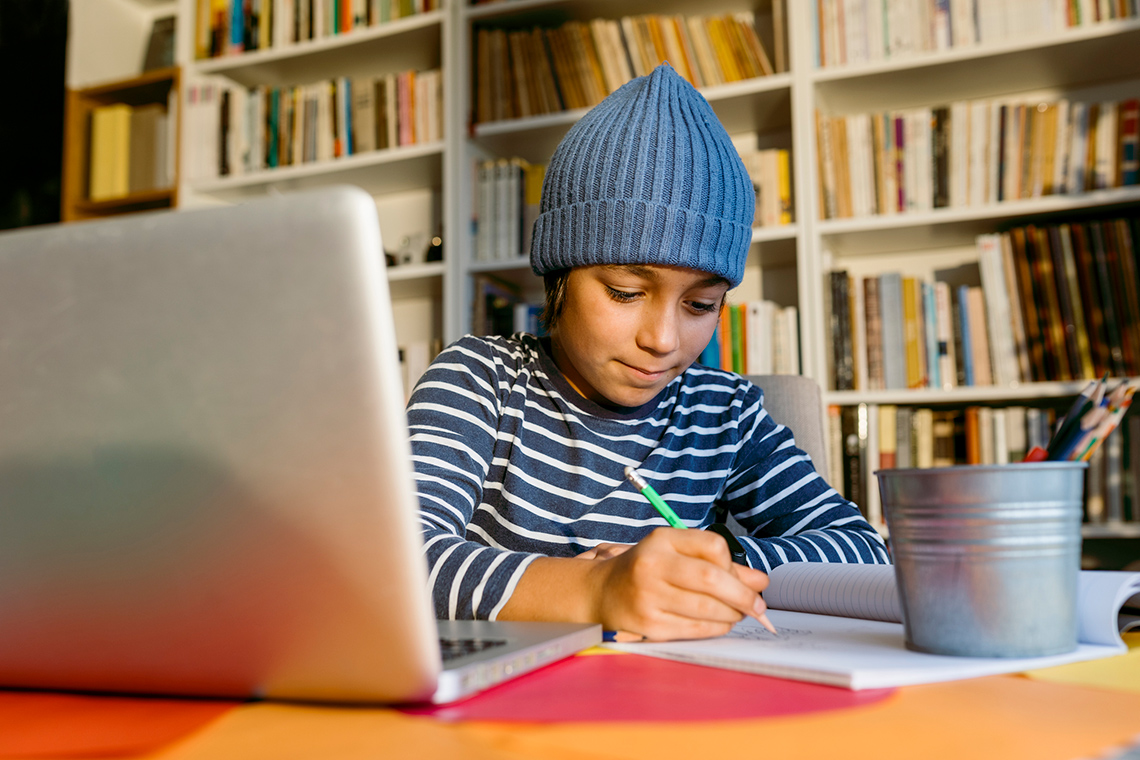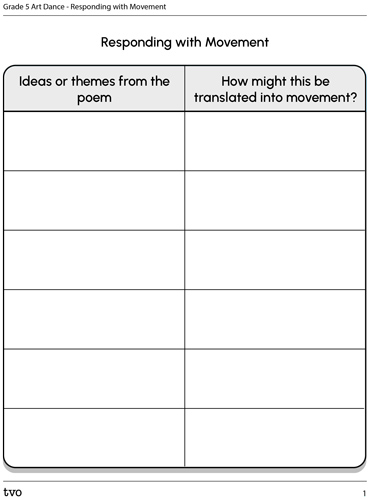Minds On
Today’s vocabulary
Let’s get started!
Explore the following video from TVOKids. In this video, we’ll meet a spoken word artist named Mahlikah Awe:ri.
After exploring the video, consider the following questions:
- What were some of the key ideas shared in Mahlikah’s poem?
- What did this poem make you think of?
- What were some of the ways in which Mahlikah expressed her ideas and emotions?
Respond to the questions using a method of your choice.
Action
Get ready, get set…
Task 1: Brainstorming
Let’s revisit the poem shared in the video in the Minds On section.
Did You Know?
Did you know?

Two teachers having a conversation. Teacher A says: Did you know what Mahlikah uses she/they as pronouns? Teacher B responds: Thanks for letting me know, Teacher A! Using the pronouns a person has asked you to use can make them feel welcome and comfortable.
If you are unsure of someone’s pronouns, try asking: “Can you remind me which pronouns you use?”
You can also use their name in place of any pronoun. For example:
“I really enjoyed Mahlikah’s performance. Malikah is a talented performer!”
Let’s think about Mahlikah’s poem.
Answer the following questions using a method of your choice. When you’re ready, you can press the ‘Answer’ buttons to reveal sample responses to each question.
- What were some of the key ideas shared in Mahlikah’s poem?
Press the ‘Answer’ button to reveal a sample answer to this question.
Mahlikah’s poem expresses their connection to the land and to their people. The poem connects Mahlikah’s identity to their ancestors. For example, they repeated “I am my people’s stories” and connected to the Earth and the natural world in between these statements.
This poem could also connect the past, present, and future. They discuss “pictographs” and the “prophesy” with being “resilient” and an “indomitable force.” This could mean that Indigenous people are not just from the past, but that they are still here.
- What did this poem make you think of?
Press the ‘Answer’ button to reveal a sample answer to this question.
It made me think of nature and animals.
- What emotions were conveyed in this poem?
Press the ‘Answer’ button to reveal a sample answer to this question.
Pride, love, and hope
Here are some sample themes, words, and emotions inspired by Mahlikah’s poem. Which ones resonate with you? Are there any additional ones you would add?
|
resilience |
land/nature |
family/ancestry |
|
land |
identity |
culture |
|
love |
journey |
music/rhythm |
|
strength |
pride |
history/her story |
Take note of the words that resonate with you (or any additional words that you would add)!
Go!
Task 2: Responding through movement

Revisit the brainstorming you did about Mahlikah’s poem. Select three words that resonate with you. How might you respond to some of these through movement?
Use the following example to help guide you.
|
Ideas or themes from the poem |
How might this be translated into movement? |
|---|---|
|
Journey |
Walk forwards in a curved pathway at a high level. |
|
Love |
Crouched down in a kneeling position and wrap arms around self in a closed shape position. |
|
Land |
Lay down on the ground with back as a body base. Spread arms and legs out to the side connecting all parts of the body to the ground. |
Here is an example of the second movement for the word ‘Love.’

Use the following fillable and printable Responding with Movement graphic organizer to brainstorm how each word could be translated into movement. You can also record your ideas in a notebook or using another method of your choice.
When thinking about the movements that could be created, consider the elements of dance (e.g., levels, body bases, tempo, etc.).
Press the ‘Elements of Dance’ button to reveal the elements of dance chart.
|
Body |
What is your body doing? Consider the following questions:
|
|---|---|
|
Space |
Where is your body moving? Consider the following questions:
|
|
Time |
When is the body moving? (in relation to time) Consider the following questions:
|
|
Energy |
How is the body moving? Consider the following questions:
|
|
Relationship |
Who or what is the body moving with? Consider the following questions:
|
Portfolio
Portfolio
Consider adding your Responding with Movement graphic organizer to your portfolio.
Task 3: Creating dance sequences

Consider the three movements you imagined in the last section. Refer to the Responding with Movement graphic organizer. How might these be sequenced together to create a short dance piece?
Record your answers using movements, pictures, or as a detailed written or audio description.
If possible, share the dance sequence with someone!
Be sure to do a safety check before you try your dance sequence.
Safety
Before you begin, consider these safety precautions:
Portfolio
Portfolio
Consider adding your dance sequence to your portfolio.
Consolidation
Putting it all together

Portfolio
Review your learning
Use the following questions to reflect on your learning.
- Is dance an effective way to communicate ideas from texts, such as Mahlika’s poem? Why or why not?
- How did you use the elements of dance to communicate your ideas?
- If you were to create this piece again, would you change anything?
- What are your strengths as a dance creator?
- Where would you like to continue to develop your understanding?
Record your responses using a method of your choice. Consider adding your work to your portfolio.
Reflection
As you read through these descriptions, which sentence best describes how you are feeling about your understanding of this learning activity? Press the button that is beside this sentence.
I feel...
Now, record your ideas using a voice recorder, speech-to-text, or writing tool.
